
I knew we were in for a tough year when it kicked off with David Bowie passing away. And it just went downhill from there. Everywhere you turn here at the close of the Year That Was 2016, you’ll see recaps mostly focused on how dismal it all was. But there was a bright spot- 2016 was actually a pretty great year for hobby gaming and there were quite a few top notch titles that salved the societal pain of cultural icons dying, political strife, disasters, discord and senseless violence. I for one had a tough time picking out “the best†of this Olympic year so once again The Review Corner writers and your humble Editor in Chief have offered up their top three picks. That’s right – gold, silver and bronze medal winners.
But this year, we are going to do something different as well. We’re going to name Fantasy Flight Games’ Star Wars: Rebellion, designed by Corey Konieszcka, as the Review Corner Game of the Year. Now, I don’t agree with that myself but among our writers- and among gamers out in the wild- it has emerged as a clear favorite for its excellent deployment of the Star Wars setting, its novel gameplay and of course its outstanding production. It’s a truly epic design, but as you’ll read shortly I had a major issue with it. I’m also a known naysaying crank, so I encourage all gamers to check out this otherwise superlative game to decide for themselves.
So let’s get on with the medals ceremony shall we?
Michael Barnes
Review Corner Editor-in-Chief
Michael:

The Review Corner’s Game of the Year, Star Wars: Rebellion, was a good game but its lousy combat mechanics were enough to keep it off my top titles list- and enough to make me wish that Gale Force 9 had the Star Wars license instead of Fantasy Flight Games. One-upping the bigger license –and publisher- GF9 continued their hot streak this year with Star Trek: Ascendency, which is to my mind the best design that 2016 had to offer. This is a simply stunning piece of work that both embraces classic 4x game qualities and innovates them while supply a very distinctly Star Trek sense of narrative, setting and themes. The production is top notch, the gameplay is long but very satisfying and any Trek fan from the most casual to those that have custom made Vulcan ears should be duly satisfied with this extraordinary game.
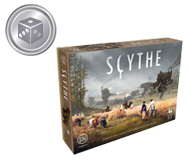 |
Scythe
Scythe is a somewhat divisive game, but only because I think some folks have misunderstood what it is all about. Some have come down hard on the game for supposedly “promising†4x gameplay and lots of mech-on-mech action. But it is really a much more interesting design than that. A fairly heavyweight hybrid design, it is much more of an economic development game with a compelling resource management system. But this is also where the theme of the game becomes more apparent, as the various factions in the game shift gradually from an agrarian lifestyle to a militarized one. There are not a lot of battles in most games of Scythe, but the ones you have are always significant. I am also completely in love with the vague, suggestive adventure cards where an image is somewhat open to interpretation and you have three potential choices of what is actually happening in it- and different rewards or penalties for each choice. This is a rich, highly developed game- it’s beautifully executed and it is among the better Euro-leaning hybrids that I have ever played. |
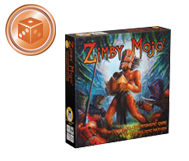 |
Zimby Mojo
While Scythe runs like clockwork, Jim Felli’s Zimby Mojo certainly doesn’t. Like his previous game Shadows of Malice, Zimby Mojo is completely unlike anything else out there on the market. If you are willing to dive into a challenging, ridiculous, hilarious, oddly demanding and riotously violent game about pygmy cannibals scrambling to commit regicide and take the crown for themselves – plus zombies- then the delights of this game are many. It’s a little ramshackle and wild, but that also makes it quite exciting. It’s utterly refreshing in an era when there are far too many games and far too few original concepts to come across something like Zimby Mojo that dares to be different and eschew pretty much the entire modern hobby gaming design brief. |
Charlie:

Rebellion is incredible. It's the definitive licensed game, a high quality release that acutely captures an important slice of culture. It's simultaneously a dudes on a map game as well as a hidden movement game, yet it's also neither. It's a game full of stories comprised of elements that are uniquely Star Wars while feeling as though they are fresh and your own. George Lucas is not writing the story on this one, rather, you're taking the wheel and firing out a creation that is just yours.
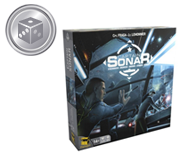 |
Captain S.O.N.A.R.
Captain Sonar isn't about deep strategy, tactical puzzles, or social manipulation. It's all about Fun with a capital F. This is one of the most purely exciting games I have ever played, and the full eight player experience is unparalleled. It may be hard to bring to the table regularly, but the team on team setup brings out strong rivalries and epic trash talking. Most importantly, the payoff is huge as that warm embrace of a direct hit envelops your body. |
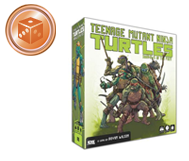 |
Teenage Mutant Ninja Turtles: Shadows of the Past
In a year not quite packed to the gills as 2016, TMNT would sit atop the heap. This is one of the best dungeon crawl style games in existence, pairing clever narrative scenario structure with interesting and thematic play. The player taking on the forces of evil is just as fun as cooperatively rolling those dice pools and strategically sharing certain symbols. It's a very back and forth dynamic game with hugely interactive environments and many moments of joy. |
Kyle:

Talon brings the fleet-level tactical space game of yesteryear back into the limelight in a big way. It's not flashy like Armada or X-wing, and has far more in common with Star Fleet Battles and its bretheren—but its gameplay has been distilled and refined to perfection. It plays smoothly, quickly, and will make you feel as though you're in the captain's chair, not sitting in an engineering room somewhere poring over engine and thrust charts. Jim Krohn may have outdone himself with this one. It's a whole lot of game all packed into a gorgeous GMT production.
![]() 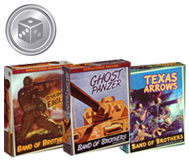 |
Band of Brothers
World War II squad game Band of Brothers was the best thing to happen to the genre upon its 2011 release, but the production left some wanting, with a few awkward rule book quirks and thin card stock maps. But the series' excellent streamlined tactical play shined through, and the series is now an honest-to-goodness system. Coming alongside the new Texas Arrows scenarios is a full revamp of the system's first two games, with mounted maps, updated counter art, and homogenized rules for all games in the series. Band of Brothers is still the best squad game on the market, and now, it looks the part. |
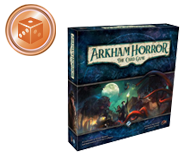 |
Arkham Horror LCG
I despise Arkham Horror's 2005 edition, and I dislike the LCG model for failing to provide an interesting game until you're invested in several expansions. So why do I award Arkham Horror: The Card Game with this year's bronze medal? The game is a unique deck construction experience, with characters that grow or are damaged based on your experiences in the game's scenarios. The process is fairly painless, and won't have you up into the morning hours with thousands of cards spread across your table as you try to build an optimal deck. It's also a very fine game, reflecting some of FFG's recent strides toward cleaner rule sets across all its games. It somehow manages to provide both an engaging mechanical design as well as a solid narrative-driven experience. |
Byron:

Yes, it’s an expansion, but no full game I’ve played this year has been this generous with its content or this full of surprises. The heroes from the Legends of Andor base game, joined by one newcomer, must traverse the storm-harried sea separating the Southern Kingdom of Andor from Hadria to the North. New mechanics like maritime navigation, snow (in the Hadria board) and a new “Fame†track address the biggest flaws of the base game without abandoning what made it so unique. This sets a new bar for expansion design.
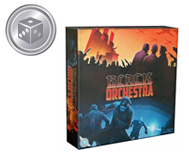 |
Black Orchestra
Covering the historical conspiracy among the German military to assassinate Adolf Hitler, Black Orchestra surprised me with its blend of mechanical simplicity and historical flavor. Close to Pandemic in its complexity and overall feel, the game does a remarkable job of making its players feel like conspirators in the Third Reich (which expands across the board as you play). It made a shallow splash among other big releases this season, but Black Orchestra has what it takes to join Freedom: The Underground Railroad as a perfect classroom game that’s actually fun to play. |
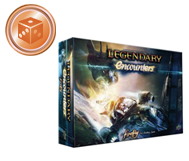 |
Legendary Encounters: A Firefly Deck-Building Game
Legendary Encounters: Firefly could have been the crown jewel of Upper Deck’s catalogue were it not for a few missteps, primarily the physically painful art and the bland deck-building options. Look past those, however, and this is the Firefly game fans deserve. The option to collect credits by completing scenario-specific tasks and Side Jobs, then spend those credits on ship upgrades, repairs and medical attention between episodes, drastically changes the face of the game, especially when combined with the fully fleshed-out campaign system, and the “main character†concept, while gimmicky, successfully recreates the show’s most memorable moments. |
Grace:

As a huge Uwe Rosenberg fan, I get excited with every new release from him. A Feast for Odin is his latest big box release and by big box, I mean big box. This takes the same ideas seen in other Rosenberg games – resource management, feeding your people, and perfectly arranging tiles – and combines them into one incredibly smooth and compelling experience. You can’t help but want to play again and again, trying out new strategies and besting your previous score.
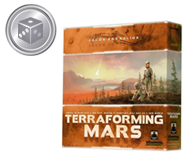 |
Terraforming Mars
There’s not a lot to say about this that others have already said. It is an outstanding engine building game that keeps you engaged the entire time. The theme is well integrated into the game as you feel like you are helping to increase the oxygen level, temperature, and create oceans on the Red Planet. The tight decisions over how to time your actions, play your cards, and spend your resources is what makes the game more engaging than others of its kind. |
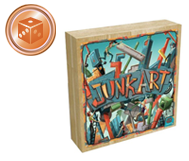 |
Junk Art
This is probably my biggest surprise of the year. I like dexterity games well enough, but they are usually not much more than silly filler. Junk Art made a real game out of stacking pieces and the variety of different ways to play keeps it fresh and exciting every time you pull it out. Plus, few games are as entertaining when it’s other players’ turns than this one. |
Nate:

One could be forgiven for looking at Star Wars Rebellion and assuming it was a giant game of combat and sweeping armies. But the master stroke from veteran designer Corey Koniezcka is that Star Wars Rebellion is actually a game about characters, the characters we have grown to love over the last forty years. There's Luke Skywalker as he sabotages a plot on Coruscant. There's Chewbacca as he's captured by the Empire and carted around the board. There's Emperor Palpatine, building a Death Star by Dantooine. None of those moments occurred in the original Star Wars trilogy, but all feel completely natural in Rebellion. It's the original trilogy in board game form, with all of the dramatic moments one would expect. It's a long two-player game, which means it will have a hard time getting play for some people. But the time you spend with it is sweet indeed.
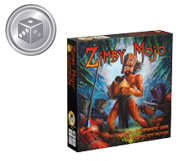 |
Zimby Mojo
Zimby Mojo is the sort of game that you have to wrestle. It doesn't sit down and play nicely with you. It's loaded with rules, depends heavily on die rolls and weird corner cases, and can go pretty long. But underneath all of that is one of the most original games of 2016, and one that inhabited my mind long after it was over. As a game about cannibalistic creatures who are seeking to overthrow the king (together) so they can be king (alone), Zimby Mojo is predictably insane. There are wild swings of fortune, but beneath that wildness is a surprisingly nuanced game, a sort of calculated chaos. It requires someone who is willing to surf the wave of insanity rather than rowing against it. Combined with a truly original setting that the game manages to express through its mechanics and gameplay very effectively, and you are left with one of the best games of 2016. It will not be for everyone, but the people it is for will absolutely love it. |
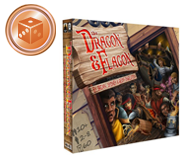 |
The Dragon & Flagon
As a game that plays through a whole fantasy tavern brawl, The Dragon & Flagon is hard not to like. There are the charming components, including 3D tables, wooden chairs, and barrels that feel suitably roll-y. There's the nine unique characters, all of whom represent a specific class roleplayers will recognize, and all of whom play very differently. There's the fun timing mechanic, where different moves take a certain amount of time, and the player cannot play a new move until that time has passed. All of these qualities meld together into one of my favorite games of the year. Although simultaneous action selection can often lead to frustration, here players only have to plan one or two moves at a time, reducing downtime and allowing players the ability to adjust on the fly. It's a funny game that rewards repeated plays, something that won't be hard when the game is this fun. |
Drew:

Fans of Star Wars have faced an embarrassment of riches in recent years including some absolutely fantastic games bearing the Star Wars license that have emerged. But none are as fantastic as Star Wars: Rebellion. This title takes the original trilogy and puts is on your tabletop. You'll command heroes like Luke and Chewbacca and send them on missions. The villainous Empire will seek to destroy the Rebel Base. And their looming Death Star is an almost unstoppable force ... almost. And while every major element of the original trilogy is represented, the players are free to make strategic and tactical decisions that differ. So what you have is not just Star-Wars-in-a-box, but the means of spontaneously rewriting your own Star Wars saga every time you play it.
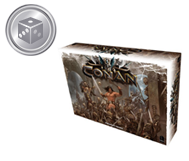 |
Conan
Conan is not without its problems. It lacks a robust customization system and there are some unfortunate translation errors and resulting confusion about special abilities. But the rest of the system is so amazingly fun that it's easy to see past the flaws. In Conan, you take on the role of the Howardian hero and his allies against all manner of evil monstrosities. The game comes with thirteen scenarios, a wide assortment of exceptional miniatures, and a game system that keeps it interesting. But, beyond all of that, Conan just feels epic. You can mow down hordes of undead, scramble to avoid the witchery of a spellcaster, and have adventures on the high seas. And it all takes place in about an hour. For that kind of epic experience, Conan is hard to beat. |
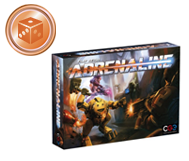 |
Adrenaline
This title marries all the shoot-em-up excitement of an aggressive battle with the strategic and tactical thinking of European design. In Adrenaline, it's kill or be killed. But just doing damage isn't the point. You want to do the most damage, to the most players, and reap the most points. The game mechanics wonderfully keep things flowing as players are encouraged to spread out the damage rather than gang up on one weakling. Respawns avoid player elimination and a horde of unique weapons and multiple play modes keep everything interesting. Adrenaline provides edge-of-your-seat action that also strongly engages your brain. |
Craig:

Since its 2015 start, Star Wars: Armada has grown in sporadic leaps, each one bringing new abilities and strategies to the table, but this year’s waves have had by far the biggest impact on the game. Waves 1 and 2 were really the completion of the core game in a lot of players’ eyes, and with the exception of Ackbar’s meta change for the Rebels, each side pretty much played out like the Core Set foreshadowed they would. But the flotillas in Wave 3 introduced game-changing fleet support abilities, and combined with the Interdictor’s harassment cards in Wave 4 they evolved the game into a spectacular combined arms battle that expands the gaming possibilities exponentially. Plus, Liberty owners can field a big fleet that can take on the Imperial Star Destroyer, as long as they do it the Rebel way, not head-on (sorry Lib, you’re still not big enough).
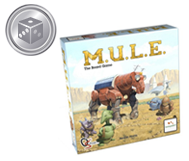 |
M.U.L.E.
My most-anticipated game of 2016 held the Gold spot for half the year before giving way to the Armada waves, but it still remains my favorite economic game and the first accurate “table port†of the classic Atari game. M.U.L.E. outshines all other eco-sims by giving the goods players gather and trade actual utility in the game, changing them from something to be simply min-maxed into a vital part of the player’s game life. Would-be First Founders must balance the high profit margin from food sales with the need to eat food in subsequent turns. Sure you can buy up cheap energy, but part of it will spoil before you can use or resell it. Cornering the smithore market will drive M.U.L.E. prices sky-high, but with new plots of land to develop, you need to buy M.U.L.E.s, too. Like no other game, M.U.L.E. confronts players with real economic decisions, and only its relatively tight player count kept it from the top of the podium. |
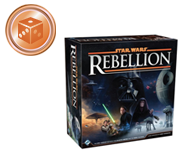 |
Star Wars: Rebellion
This amazing game was destined for a Michael Phelps-like stack of gold in the early and middle portions of 2016, and is probably my new favorite two-player game that doesn’t involve giant plastic spaceships. Don’t get me wrong: the ship models in Rebellion are impressive, but the most amazing thing about this game is it actually lets you play the trilogy, using all your favorite heroes and villains in thematic ways to recreate Star Wars or choose your own saga, complete with cliffhangers, thrilling battles and epic finishes. Most of the time, anyway, and that’s what dropped it to third on the podium. The combat system can provide exciting depth, provided you draw the correct cards or don’t roll all blanks with your Star Destroyer. The Death Star can wipe out the Rebel base with a single blast of its superlaser and win the game for the Empire (search the FAQ; you know it to be true), provided you don’t go the entire game without ever drawing the Fire the Superlaser card (true story). In short, its certain gold was Zola Budd-ed on the homestretch by gameplay concessions, but hey, finishing third is still pretty good. |
Raf:

Captain SONAR is a deceptively simple game. Your team of 4 players are each given a single small role on your submarine. These mechanics around these roles are so small that even calling them a mini-game is being generous and yet the way they combine is nothing short of brilliance. This game is hectic, chaotic, and above all tense. As you gain more and more information - and your opponent gains more about you - you won't even notice how loud your yelling, how little of your seat you're actually using, and how much you care about finding your opponent and eliminating them. The highs of Captain SONAR - locating your enemy and hearing "Direct Hit" - are among the highest highs I've felt in gaming. Every game has been action packed and dynamic, ending in crushing resignation or whooping celebrations. There is no doubt about it, Captain SONAR is why I play board games.
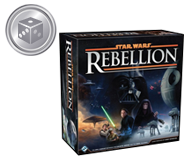 |
Star Wars: Rebellion
The Star Wars movies have always been stories of individuals set against the backdrop of a war almost incomprehensible in scale. Most Star Wars games have focused on those individuals and their stories, giving us only a glimpse at individual slices of the conflict. Until now. Rebellion manages to do something that is as impressive as it is difficult. It lays out the entirety of the Galactic Civil War, from ship construction to ground skirmishes, while still managing to make it a game about the characters. All the familiar faces are there, from Vader to Han Solo, yet you can tell your own original story. Chewbacca the Jedi? Sure thing. Wedge captured and turned to the Dark Side? You can do that too. While you plan the movements of massive imperial fleets in a cat-and-mouse race against the clock these faces you grew up with will go on adventures across the galaxy. |
 |
Arkham Horror LCG
Lovecraft's Mythos is often reduced to pop culture schlock. These dark and brooding stories of horrors so unimaginable they reduce people to gibbering messes on sight have been replaced with action adventure games that are little more than monster fights. Arkham Horror is nothing like that, and it makes for an excellent game. You play an investigator trying to navigate the horrors in the sleepy town of Arkham, MA. Small touches, like weakness cards being forced into your deck, drive player tension and horror as much as the game is providing narrative tension to your characters. The campaign structure feeds your worry; you want your character to stick around for a while and it makes running away from the scenario to save yourself a viable option. With almost a year of expansions already planned, I'm going to be playing this for a long time. |
Teri:

It would be hard to not talk about the across-table rules update, core rules update, and new battleboxes that encompass Privateer Press' 2016 release that is the third edition of Warmahordes. First and foremost, improving the core rules, as well as rebalancing the points costs (including caster battlegroup points) to incentivize the taking of more - and bigger- beasts and warmachines, made the game better, period The overall playability and viability of units across the board improved, the power spikes of certain models and factions were rebalanced (further improving overall playability of less powerful factions and units) and the clear design philosophy, which is to give more options to players and make list building harder because of it (since there are significantly fewer auto-include units in every faction) is apparent. Furthermore, the new casters available in the new battle boxes (and anticipated to be available individually in the near future) give great options and add new flavours to each faction while working well with existing units. The new models and plastics are also high quality, making them a joy for hobbyists as well. Overall, this massive release over the year from Privateer Press not only is a boon to existing players of the game, but helps make the game great for newcomers to Iron Kingdoms.
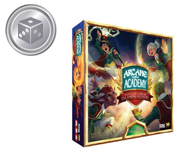 |
Arcane Academy
Eric Lang had many games come out at GenCon in 2016, with the big titles and big boxes (the likes of Bloodborne and The Others: 7 Sins) overshadowing this little IDW gem. A wonderful engine-building family game that offers a depth of strategy that isn't immediately appreciated or expected from a cursory glance at its family-friendly wrapping, I'd argue this is Eric Lang's best game of 2016. Competitive gamers will love the ways you can hinder your opponents, family gamers will love the accessible theme and casual gamers will love how meaty an experience they can have with minimal setup, takedown or learning curve. Well designed, terrifically illustrated and a flat-out fun experience, this is a great game to have on your shelf any gamer who shows at your table. |
 |
Star Trek: Ascendency
Every Star Trek fan who loves tabletop gaming should have this game. The game encapsulates the Trek universe masterfully, mechanically translating the franchise into a race for supremacy in the galaxy (between the Federation, Romulans, and Klingons) while capturing moments from the shows that delight and immerse players. The game starts with an uncharted galaxy, and the three races starting on their home planets are challenged to explore, conquer and convert systems and planets where no man has gone before. From the unique map-building system that creates a unique field of play every time, to the distinct benefits and drawbacks each core box race has (which are perfectly translated from universe lore to game mechanics), the game creates tension and offers a depth of strategy players will appreciate. Because of the immersive quality of the game, and the uniqueness of play for each race, I'm very much looking forward to the future promised expansions (Cardassians and Ferengi) to grow the game, the way new factions bring new flavor to miniature wargames. |
Shane:

Is it fair that games with a deep, attractive toy box bump a game's rating significantly for me? Probably not. But in the case of Conan there's not only a ton of beautiful plastic miniatures and a gimmicky overlord's dashboard, there's solid, fluid, fun gameplay as well! Sure, Conan himself is just a bit overpowered and his companions are often just along for the ride. But the game's called "Conan," right? Despite the titular barbarian's ridiculous killing capacity most scenarios seem like an even match, with a victory on either side being just barely eked out with some lucky die rolls and smart decisions. For a game that's been anticipated for years, it's a relief to say the least that Conan was worth the wait. As big a hit with my hardcore gamer friends as it was with my much older, mechanically-disinclined father, this masterpiece has seen more table time in just a month than other one-versus-all games on my shelf have seen over several years combined.
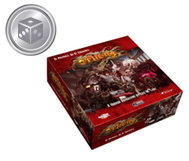 |
The Others
"Survival horror" hasn't interested me in a long time, mostly because it almost always involves a bat-winged, tentacled elder god that sleeps somewhere at the bottom of the ocean. But along came this one-versus-all, scenario-based game that reminded me why slime and extra, tooth-filled body parts can be a good thing. The Others avoided cliche New England coastal towns and immersed players into a futuristic metropolis on the verge of apocalypse--with the heroic players as a plethora of bizarre, superhuman government agents and another player as the forces of Sin, seeking to bring about the city's destruction. I was floored at just how well this asymmetric game is balanced, with both good guys and bad guy needing to play as strategically as possible against their opponents' strengths to pull off a win. The fact that I can play a single session of any scenario I want without a "campaign" slipped in and requiring me to play with the same group again and again to experience the story? Bonus. |
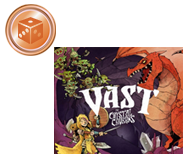 |
Vast: The Crystal Caverns
Back in the summertime this game made a sudden splash, and with good reason. With five roles to choose from, each playing completely differently and somehow balanced perfectly against each other, Vast is pure genius. With a full complement of five players it's a definitely a bit long and the learning curve for new players is steep. But once you've got a few rounds under your belt the gameplay is smooth and elegant, almost intuitive--until you decide to play one of the other roles and have to learn the game all over again. That's not a complaint, though, because this makes Vast one of the most mentally engaging and satisfying multi-player competitive puzzles on the game shelf, with a great level of replayability and a vastly (ha!) different play experience when playing with two or three players instead of five. And let's face it: anyone who can make it fun to play a cave deserves a medal or two. |
























 Customer Support
Customer Support  Subscribe
Subscribe 




 Account
Account  Wishlist
Wishlist 









